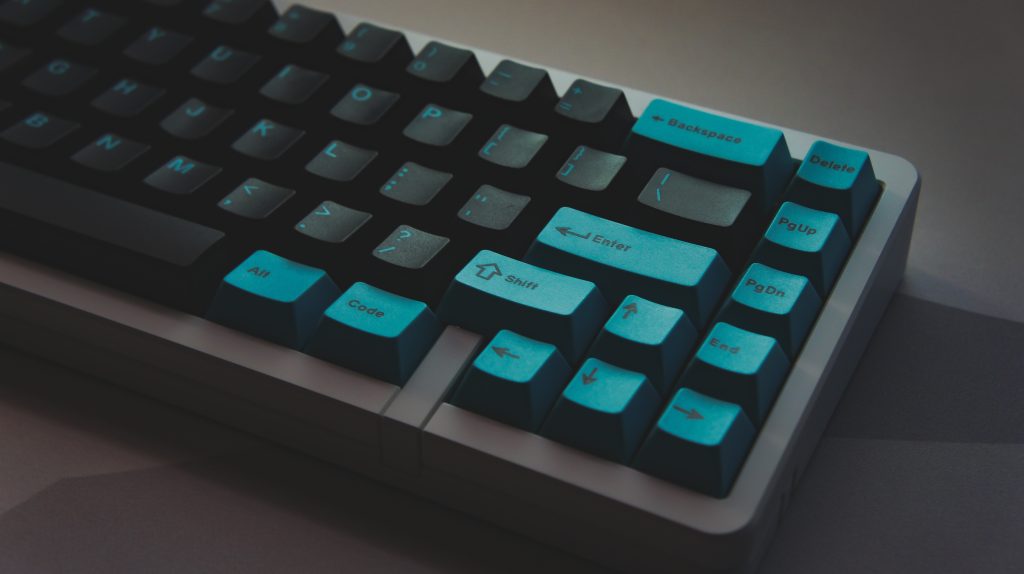Every computer user interacts with a keyboard, but not everyone understands the potential power it holds. A keyboard isn’t just a tool for typing words, it’s a gateway to productivity, efficiency, and speed. But, how do you unlock its full potential? The answer lies in understanding the concept of keyboard percentages.
Think of it this way: When you drive a car, you’re not just turning the steering wheel and pressing pedals. You’re operating multiple elements that work together to deliver a smooth journey. Similarly, mastering a keyboard involves knowing how to navigate it, understanding its features, and using it to achieve a faster and more efficient work process.
Let’s break down what we mean by keyboard percentages, and how you can leverage this knowledge to your advantage.

Defining Keyboard Percentages
When we talk about keyboard percentages, we’re discussing the way we distribute our fingers’ efforts across the keys. This is directly tied to touch typing, a method where you use all ten fingers without looking at the keyboard. If you’ve ever taken a touch typing course, you’ve probably learned about the home row, where your fingers rest, and you’ve been taught to reach for keys with specific fingers to maintain efficiency.
A perfectly balanced keyboard percentage would imply equal usage of all fingers. However, this is not the case in real life. Why? Because not all keys are created equal. Certain keys are used more often than others due to language patterns and keyboard shortcuts.
The Asymmetry of Keyboard Percentages
Have you ever noticed how much you use the left shift key as compared to the right one? Or that your left hand does most of the heavy lifting while using Ctrl+C or Ctrl+V commands? This uneven distribution of labor among your fingers and hands affects your keyboard percentages.
By observing and understanding these patterns, we can fine-tune our typing techniques to maximize efficiency. Instead of striving for a balanced usage, we adapt to the imbalance, helping us to type faster, make fewer errors, and reduce fatigue.
Keyboard Percentages and Typing Speed
The imbalance in keyboard percentages also significantly affects your typing speed. You see, when we start learning how to type, we tend to overuse certain fingers, specifically the index and middle fingers. While these fingers are stronger and faster, overreliance on them can lead to a bottleneck, slowing you down.
By incorporating your underutilized fingers (usually the pinky and ring fingers) more, you can increase your overall typing speed. Though these fingers might be weaker and slower at first, with practice, they can become efficient contributors to your typing prowess.
Keyboard Layouts and Keyboard Percentages
Another critical aspect to consider when discussing keyboard percentages is the keyboard layout. The QWERTY layout, currently the most widely used, was designed in the era of typewriters to avoid key jams by placing frequently used keys far apart. However, for modern computer keyboards, this layout may not be the most efficient.
Alternatives like Dvorak or Colemak layouts aim to reduce finger movement, leading to faster typing speeds and potentially more balanced keyboard percentages. It’s like rearranging your workspace to keep everything you frequently need within arm’s reach. It’s a significant change, but the potential speed and efficiency benefits could make it worth considering.
Keyboard Shortcuts
If you really want to elevate your productivity and take control of your keyboard percentages, learning and using keyboard shortcuts is the way to go. Many of us are familiar with the basics like Ctrl+C for copy and Ctrl+V for paste. However, there are numerous other shortcuts that can speed up your workflow significantly.
Shortcuts for functions like finding a word on a page (Ctrl+F), or opening a new browser tab (Ctrl+T) can shave precious seconds off your tasks. There are also application-specific shortcuts that can turn you into a power user in tools like Microsoft Word, Adobe Photoshop, or Google Sheets.
Advanced Keyboard Techniques: Go Beyond the Basics
The understanding and application of keyboard percentages can take you to the next level of productivity and efficiency, but that doesn’t mean we should stop there. Beyond touch typing and learning keyboard shortcuts, there are advanced keyboard techniques that can further optimize your workflow.

Key Binding Tricks for Personalization
Think of key binding as creating your own set of keyboard shortcuts, tailored to your specific needs. This is particularly useful for gamers who often need quick reflexes, but it’s also handy for any computer user.
For instance, if you frequently use a specific tool in Photoshop, you can assign it to a key or key combination of your choice. This way, you are using your keyboard percentages wisely, adapting your tool to your workflow, and not the other way around.
Keyboard Customization: Ergonomics and Beyond
Speaking of adaptation, let’s not forget that keyboards come in different shapes and sizes. Standard keyboards might not always be the best fit for everyone. For instance, a compact 60% keyboard eliminates lesser-used keys and can help you maintain better ergonomics by keeping your mouse closer to your typing position.
Similarly, split keyboards are designed to offer a more natural typing position, reducing strain on your wrists and fingers. These keyboards often allow for a higher degree of customization, so you can tweak key assignments to further optimize your keyboard percentages.
Keyboard Efficiency and Software Tools
Various software tools can help you improve your typing technique, speed, and ultimately, your understanding and application of keyboard percentages. These tools can provide insights into your typing patterns, highlighting overused keys, underused fingers, and potential efficiency improvements.
For instance, keylogging software (used ethically, of course) can track your keystrokes and generate a heatmap. This heatmap can show you which keys you hit most often, providing a clear picture of your keyboard percentages. It’s a great way to identify inefficiencies and to track your progress as you implement these keyboard tips and tricks.
Read More: Get the Perfect Fit: How to Choose Your Keyboard Size
The Hidden Gems: Lesser-known Keyboard Functions
Finally, let’s talk about the hidden gems of the keyboard: lesser-known functions that can make a significant difference once discovered. For instance, did you know you can navigate text without taking your fingers off the keyboard? You can use combinations like Ctrl+Left Arrow or Ctrl+Right Arrow to jump from one word to another. Or you can use Home and End keys to jump to the start or end of a line. These tricks can save you time, especially when you’re editing a large chunk of text.
The Keyboard’s Role in Coding
As we delve deeper into the realm of keyboard efficiency, it’s essential to address a specific group of keyboard warriors: coders. Understanding keyboard percentages can dramatically change the game for anyone who writes code, from beginner programmers to seasoned software engineers.
The Power of IDE Shortcuts
Integrated Development Environments (IDEs) like Visual Studio Code, IntelliJ IDEA, or PyCharm are packed with features that make coding more efficient. Key among these are keyboard shortcuts.
Every IDE has a plethora of shortcuts that, when mastered, can significantly reduce the time you spend writing, navigating, and debugging code. Whether it’s quickly finding a class definition, auto-formatting your code, or toggling between files, IDE shortcuts can transform your coding workflow.
Keyboard Layouts for Coders
If you thought alternative keyboard layouts like Dvorak or Colemak were only for typists, think again. Some layouts are specifically designed with coders in mind. One such layout is Programmer Dvorak, which places frequently used symbols under the fingers of the home row, optimizing keyboard percentages for the patterns found in programming languages.
Macros: Automate Your Typing
Macros are another powerful tool for coders. With a macro, you can record a series of keystrokes and assign them to a single key or key combination. This can be a great timesaver for repetitive tasks or complex commands. With a macro, you’re not only increasing your speed but also optimizing your keyboard percentages by reducing unnecessary keystrokes.

Collaborative Coding and Keyboard Shortcuts
In the era of remote work and collaborative coding, understanding and utilizing keyboard shortcuts becomes even more crucial. Online tools like GitHub or GitLab have their own set of shortcuts that can expedite code review and collaboration processes.
Navigating pull requests, reviewing changes, or switching between repositories can all be done with a few keystrokes, saving time and keeping your hands on the keyboard.
The Future of Keyboard Mastery
As our relationship with technology continues to evolve, so will the role of the keyboard. Virtual and augmented reality, voice recognition, and AI are all changing how we interact with our devices. Yet, for now, the keyboard remains an essential tool for many tasks, particularly for those that require precision and speed.
So whether you’re coding the next big app, writing a novel, or just answering emails, remember that understanding keyboard percentages and applying these tips and tricks can turn the mundane act of typing into a productivity power move.
Keep practicing, keep exploring, and keep typing. With every keystroke, you’re not just inputting characters; you’re crafting efficiency, speed, and productivity. And that, dear reader, is the true power of the keyboard.

Experience is what matters at the end!!
Hi! This is Jacob Jay – founder of Keyboardgear.com! From childhood to adulthood, I’ve always remained passionate about IT, and the revolution in this industry, especially gaming on the PC can’t go out of my way. Since I’m an enthusiastic gamer, and I love to experience various gaming accessories, particularly mechanical keyboards, that really boost my gaming adventure manifolds. So, my nerve cells hit me to transfer my experiences into word form and share with others to identify the ideal keyboards perfectly fit for their gaming modes.
I know very well how hard it is to find the high-quality items available on the internet that ought to be exactly the same as seen as on the screen. But the counterfeiters have ruined the user’s trust. As I have passed all such situations, I’m obliged to deliver the genuinity and express the same as what I am saying.
So, now, I’m working on the mission to provide very helpful and frankly but trustworthy reviews and guides about various mechanical keyboards, mouses, and other gaming accessories as per my personal experiences and sound knowledge.
